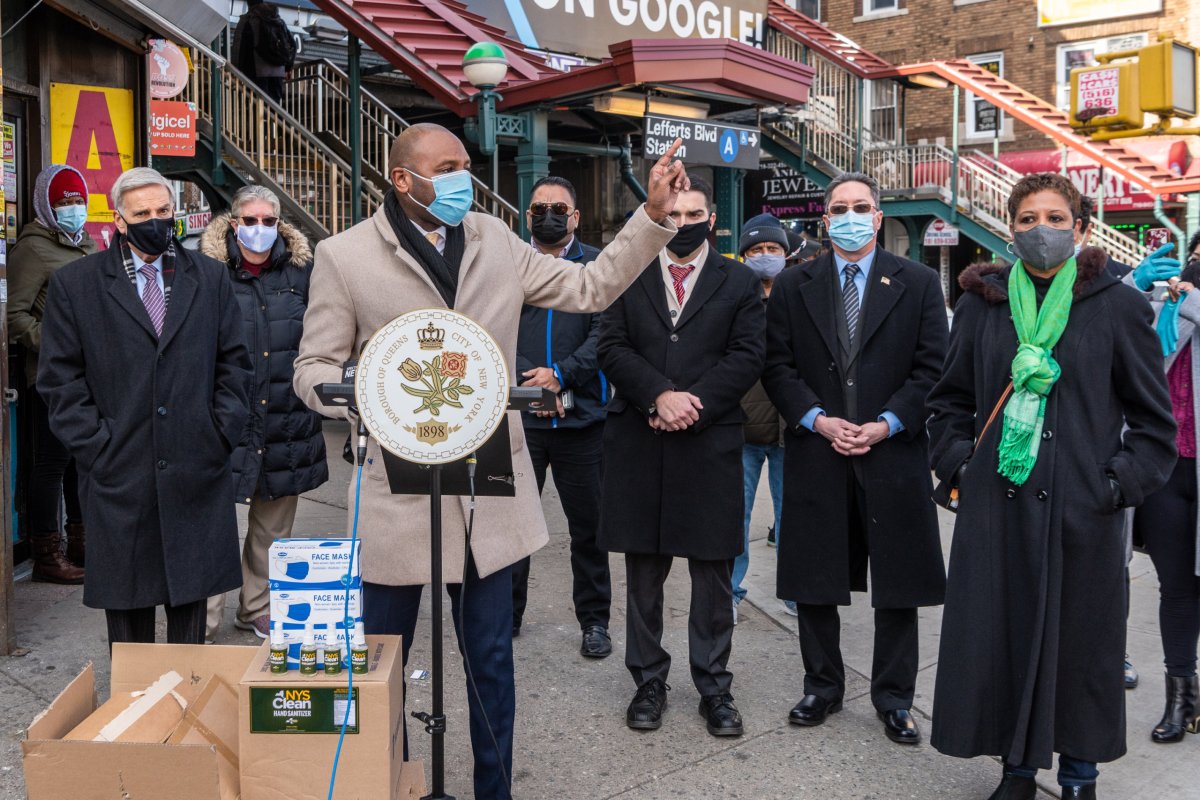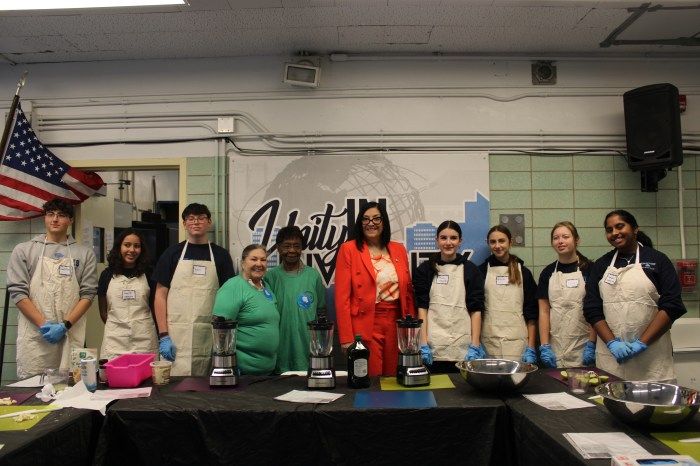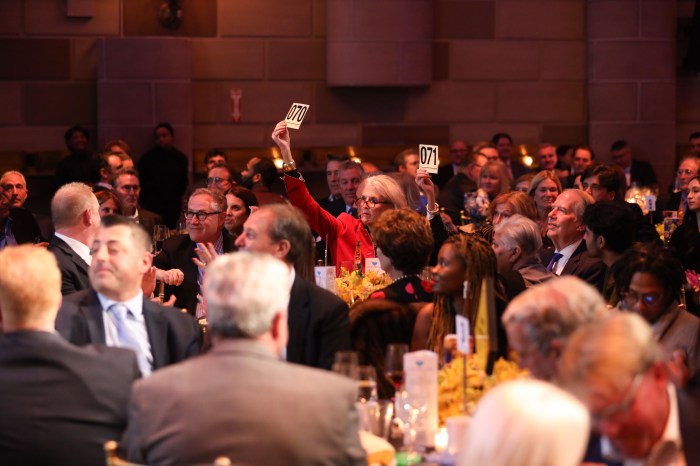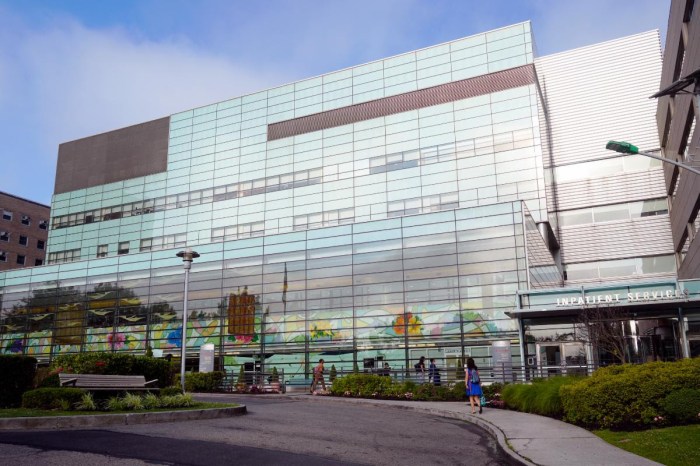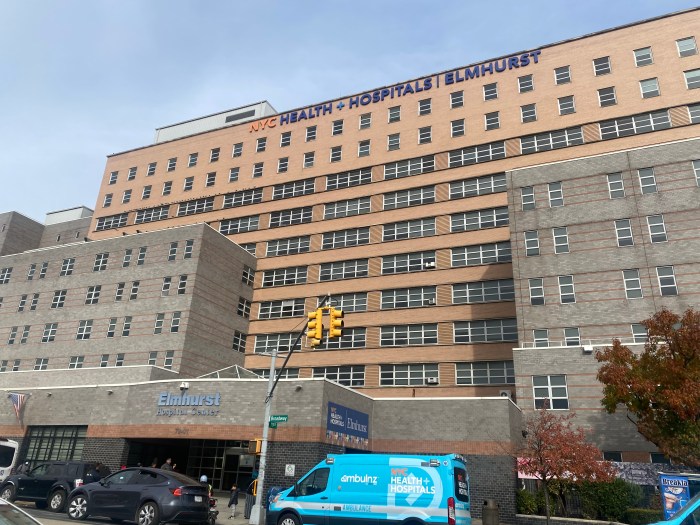BY CARLOTTA MOHAMED AND GABRIELE HOLTERMANN
Borough President Donovan Richards, elected officials and community leaders in Richmond Hill gathered outside of the Lefferts Boulevard A train station at Liberty Avenue on Thursday, Jan. 21, to raise awareness about the prevalence of COVID-19, as well as testing and vaccine disparities.
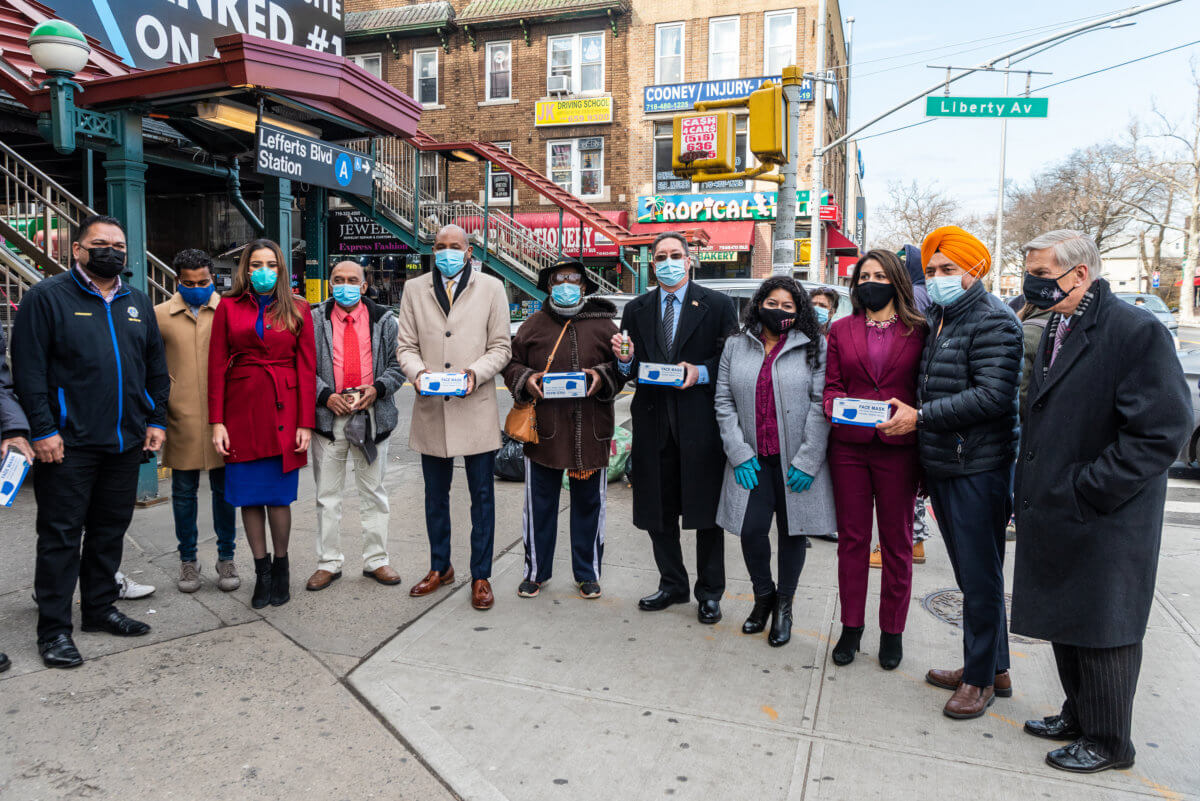
Richmond Hill and South Ozone Park are two of Queens’ neighborhoods that have been hit hardest by COVID-19, where residents are experiencing food insecurity and job losses amid rising cases of the virus, yet again.
While New York City’s overall positivity rate is 8.53 percent, according to the city’s Department of Health, the positivity rate in ZIP code 11419 is 16.2 percent.
“Put that in perspective, Richmond Hill/South Ozone Park’s positivity rate is almost twice that of the rest of Queens,” Richards said. “We also have to take personal responsibility as well. That means everybody needs to adhere to the rules and regulations we have spoken about time and time again — wearing your facial mask when you’re out, not congregating in places, in hookah bars and restaurants. We cannot have that.”
Richards was joined by Council members Adrienne Adams, Eric Ulrich, as well as Assembly members Jenifer Rajkumar, Khaleel Anderson, and David Weprin to distribute personal protective equipment (PPE) to residents and remind them to observe social distancing.
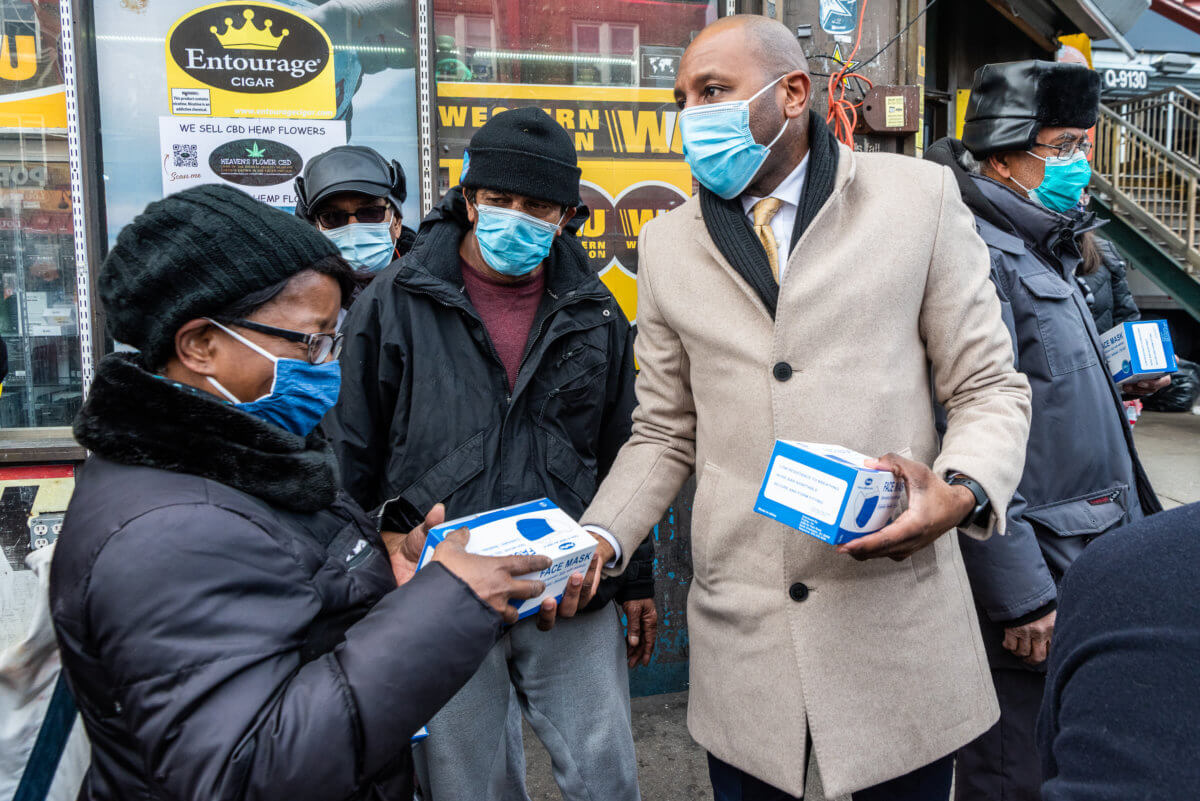
Although a new state vaccination site had opened at the Aqueduct Race Track, located at 110-00 Rockaway Blvd., on Jan. 11, Richards urged that more needs to be done for the people of Queens, especially those in Richmond Hill and South Ozone Park.
Richards said they’re opening a mobile testing site on Jan. 25 at St. Teresa of Avila, located at 109-55 128th St. in South Ozone Park.
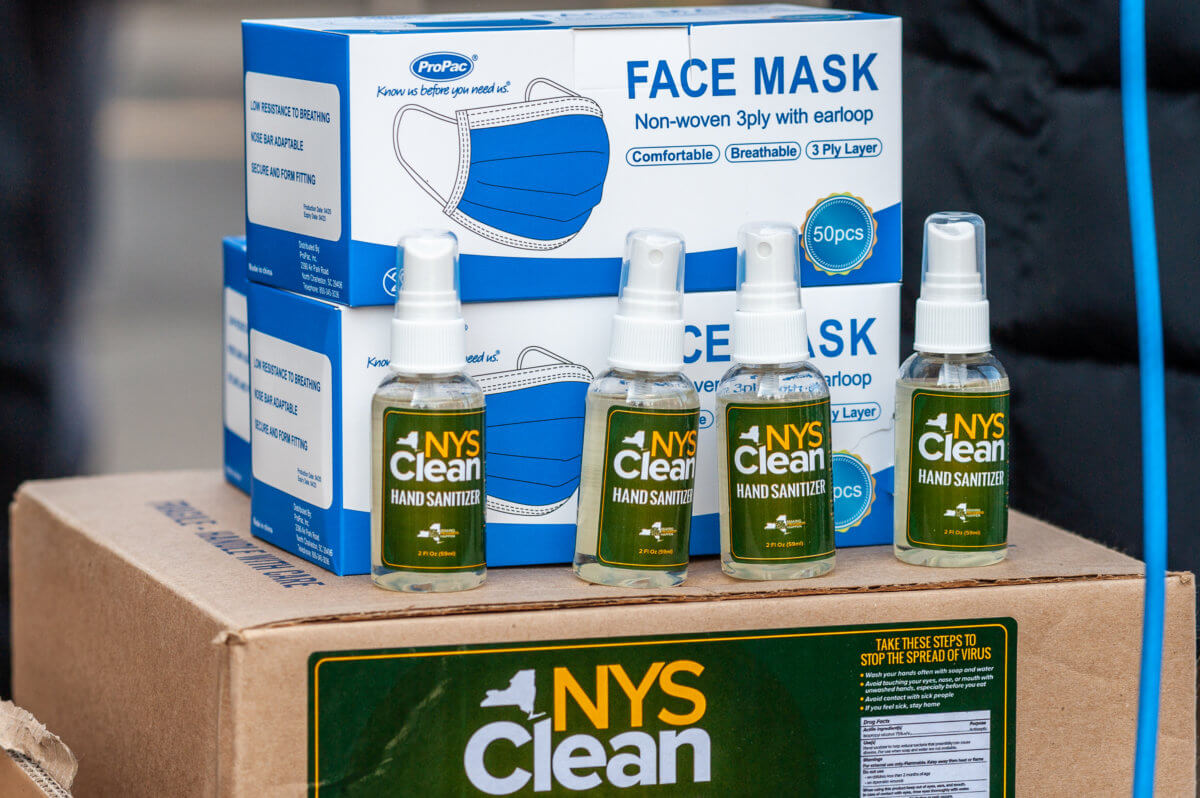
“We are already seeing disparities in who is taking the vaccine,” Richards said. “We already see the same disparities in what we saw in testing. You should not have to leave your community to get tested. We need to make sure that testing is happening and centered in every corner and pocket of this community.”
Local elected officials representing the districts called out inequities of service in communities of color, including Richmond Hill. They’re also demanding Mayor Bill de Blasio and Gov. Andrew Cuomo to open local vaccination and testing sites for residents’ convenience.
“We had to fight to get tests in March, April and May. We had to fight to get testing sites,” Adams said. “Today, we are still fighting. We are still seeing people dying in this community because of COVID-19, and there is a vaccine.”
When de Blasio and Cuomo announced a plan to open the Jacob Javits Center, located at 11th Avenue between 34th Street and 38th Street in Manhattan, Adams said they’re about to make the same mistakes as they did during the spike of the virus.
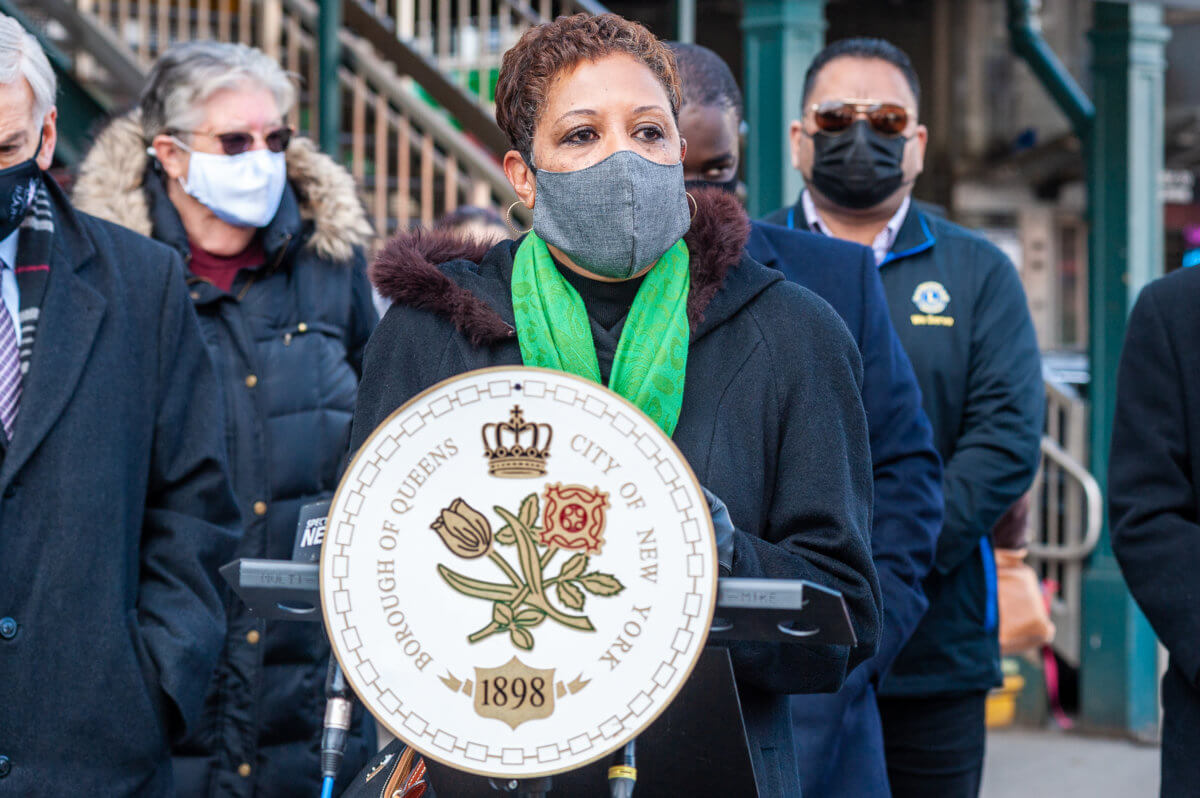
Ulrich, Adams’s City Council colleague, referenced the high number of hospitalizations and deaths that occurred in Richmond Hill and Ozone Park during the height of the pandemic.
Ulrich criticized the mayor and governor for playing the blame game, saying politics should be put aside amid the crisis.
“We have to work together, and we can not play politics with public health or public safety,” Ulrich said. “Put the politics aside, get us the testing capabilities, get the vaccine distributed to community-based organizations, faith-based organizations.”
According to Ulrich, residents cannot travel to the Javits Center, which would take two hours on public transportation.
During Thursday’s press conference, Anderson had recalled a 57-year-old constituent from South Ozone Park who called him on Monday, almost in tears, concerned about the vaccination and how she would get it.
“I couldn’t tell her where to go because there aren’t any vaccination sites in South Ozone Park or Richmond Hill,” Anderson said. “Why do our communities always have to demand, demand and demand instead of getting what we deserve?”
Rajkumar said it’s her top priority to make sure her constituents get their fair share of the vaccine.
“We are here to say collectively as your elected officials and as your community leaders, we will not be left behind. Richmond Hill matters. Your health and your safety and your welfare matters,” Rajkumar said.
“We didn’t get a community testing site until Thanksgiving. We’re not going to wait that long to get the vaccine in this neighborhood,” said Community District Leader Richard David.
Community leaders also called out the difficulty of the lack of vaccine registration process, especially for seniors and those who don’t have access to the internet.
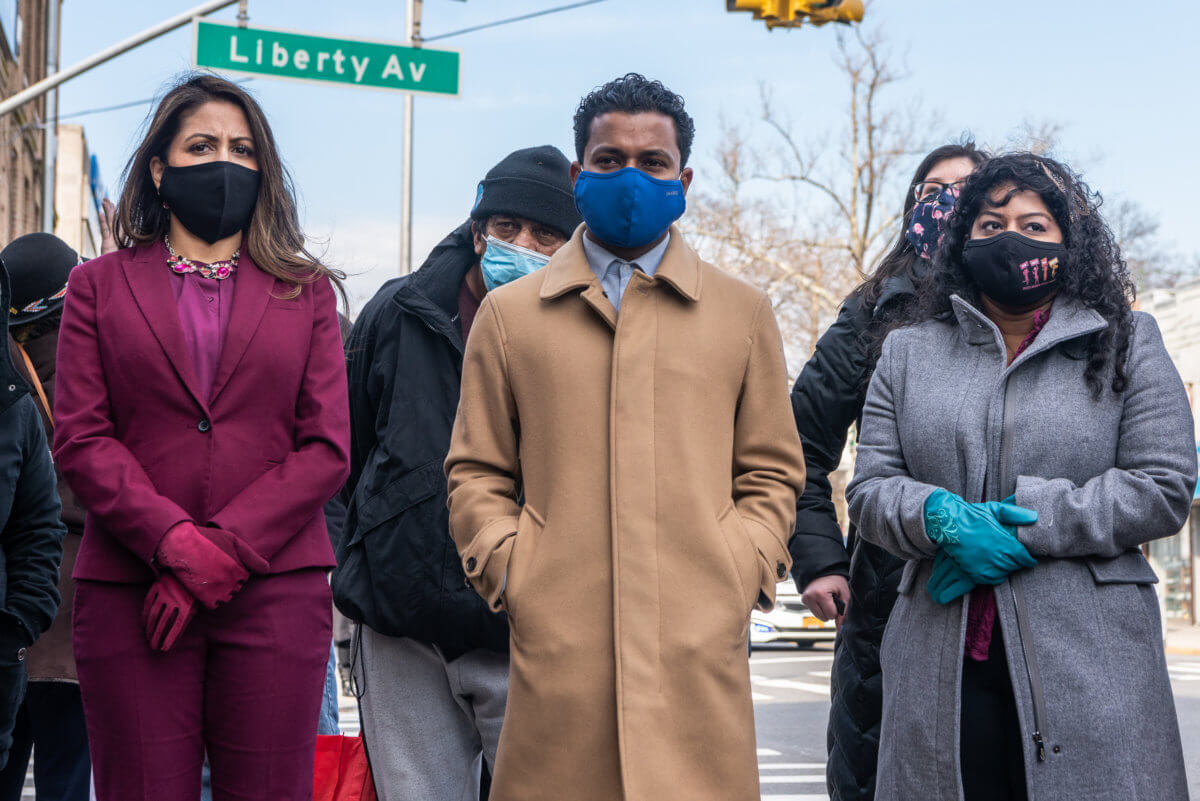
Community Board 10 Chair Betty Bratton said that her office has helped people to register for vaccinations.
“We have to find a way to improve the system that they use for people to register for the vaccine — 75, 85 and even 90-year-old people should not have to try to navigate a website or hanging on the phone for hours. We have to fix it,” Bratton said.
Richards said they are coming up with a plan to help seniors and that it was important that community-based organizations had a part in it as well.

